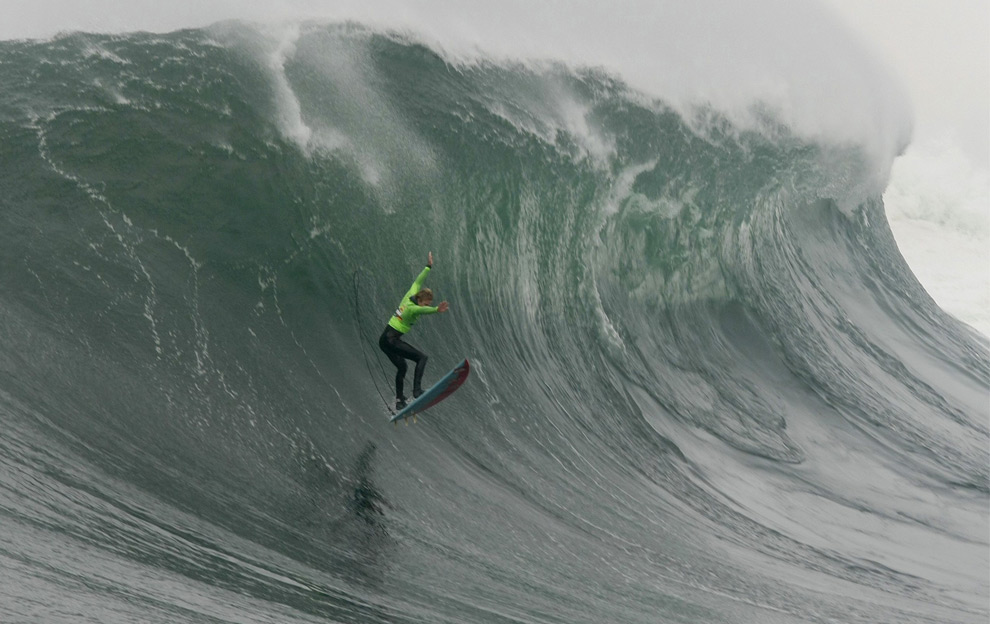
Surfline's Nick Carroll replies:
Being leashed in truly big surf can cause a surfer some trauma. Suddenly, the leash's great benefit -- connection to your board -- can mean you're forced to go where your board goes, whether you like it or not. There's nothing quite like an extra 20 or 30 yards of underwater draggage behind your nine-foot gun in what feels like the world's biggest washing machine; it's a bit like those cowboy movies, where they tie the good guy to a horse and drag him around the main street. This effect is enhanced by the heavyweight nature of most big-wave paddle-in boards.
WK believes a leash can only be regarded as a liability when it cannot be removed in a dangerous circumstance. In the past 20 years several surfers have drowned after being held underwater by a combination of a leash wrapped around a rock and a strong current dragging both board and surfer against the leash's pressure. In each case, the current prevented the surfer from being able to reach his leash strap to release it -- interestingly, in no case was the surf particularly big. (The ocean's way stronger than you think, even when the waves don't look murderous.)
Fact is, a leash is only a leash -- it is capable of breaking, and occasionally will under the impact of a seriously big wave. This is not always a bad thing, given the situations outlined above. (Sometimes being freed to swim clear is a true blessing!)
But this fact demands you keep one thing in mind: The leash is not and never was intended as a lifesaving device. It's a convenient way of keeping your board close and ding-free after wipeouts, and serves the added valuable purpose of eliminating the loose-boards-in-the-lineup syndrome -- which can be a profound danger in itself. But! If you're relying on your leash to defend you against weak swimming skills in big surf, there's an easy answer: DON'T GO OUT. It will only end in tears.
No comments:
Post a Comment